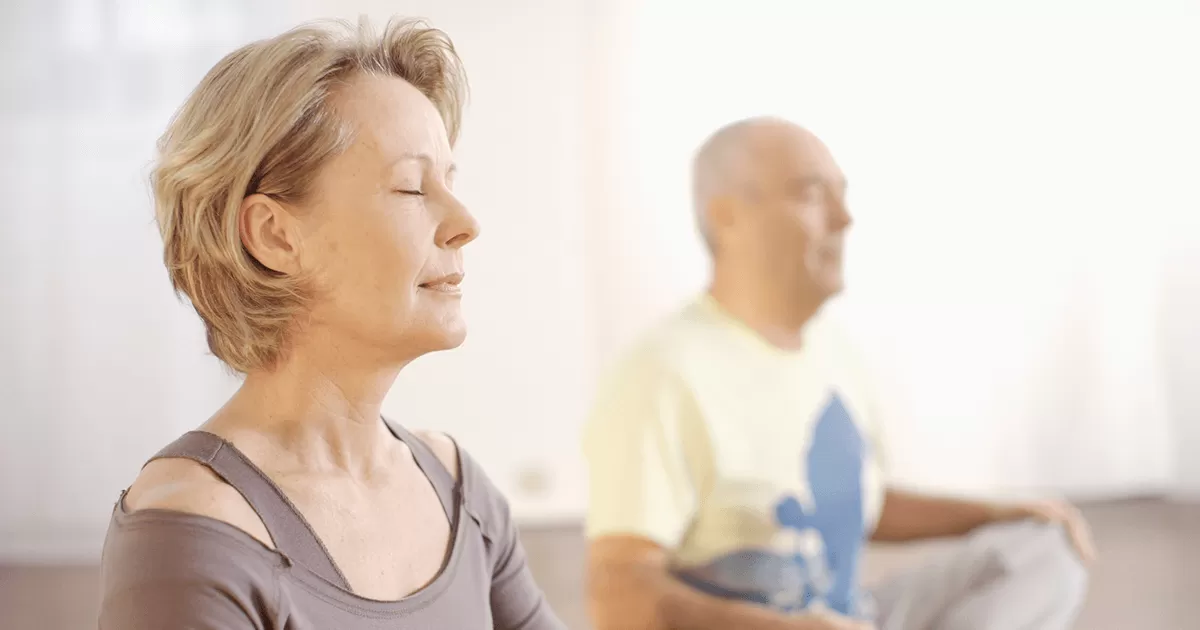5 Ways That May Help You Manage Pain

If you suffer from certain types of acute or chronic pain, there are alternative and complementary health approaches that may help you manage it. Acupuncture, deep breathing exercises, and yoga are just a few of the techniques that you may try to help manage your pain. Read more to learn about these and other pain management techniques.
If you are experiencing pain, talk with your healthcare provider before trying any of these, or other, pain management techniques.
Acupuncture
Used to treat various medical concerns, acupuncture is an ancient Chinese healing technique that uses fine needles for therapeutic purposes. The thin needles are inserted through your skin at specific points on your body. Researchers don’t fully understand how acupuncture works. One theory is that it affects the chemicals in the body that lessen pain and control blood flow.
Deep breathing exercises
You don't have to head to a packed gym or busy clinic to practice deep breathing exercises. Find a comfortable place to sit and imagine a peaceful place. Then, take one normal breath followed by a slow, deep breath through your nose, letting your chest and stomach area expand as much as possible. Then breathe out slowly through your mouth or nose. Follow this breathing pattern for several minutes. Some studies suggest that breathing exercises may have a positive effect on lower back pain.
Massage
Massage therapy is more than just an indulgence. It involves the treatment of soft tissues and muscles that may help relieve musculoskeletal-related pain. Researchers are currently studying the effects of massage therapy in people with back, neck, hand, and knee pain. Earlier studies have shown beneficial effects in those with chronic hand and neck pain. Types of massage therapy include Swedish massage, sports massage, and trigger point massage.
Tai chi
Tai chi is a slow-moving, low-impact meditative exercise that originated in China. It involves breathing deeply as you move slowly, gently, and with awareness. Research suggests that practicing tai chi may help relieve chronic pain in people with osteoarthritis, lower back pain, and osteoporosis.
Yoga
This ancient practice is used for relaxation and to improve various health conditions. It combines a series of postures, controlled breathing exercises, and meditation to help keep the body fit and the mind focused. Studies suggest that people with long-term low-back pain who practice a carefully adapted set of yoga poses may have less pain and improved ability to walk and move.
Talk with your healthcare provider to learn more about these and other ways you can help manage the pain.
[1][2][3][4][5][6][7][8][9][10][11][12][13]
References
- 1. Barnes PM, Bloom B, Nahin RL. Complementary and alternative medicine use among adults and children: United States, 2007. Natl Health Stat Report. 2008;10(12): 1-24. Accessed May 3, 2018.
- 2. National Center for Complementary and Integrative Health. Are You Considering a Complimentary Health Approach? Accessed May 3, 2018.
- 3. MedlinePlus. Acupuncture. Accessed May 3, 2018.
- 4. Harvard Health Publishing. Therapeutic Massage for Pain Relief. Accessed August 9, 2018.
- 5. Harvard Health Publishing. Tai Chi and Chronic Pain. Accessed August 9, 2018.
- 6. Harvard Health Publishing. Relaxation Techniques: Breath Control Helps Quell Errant Stress Response. Accessed May 3, 2018.
- 7. Busch V, Magerl W, Kern U, et al. The effect of deep and slow breathing on pain perception, autonomic activity, and mood processing—an experimental study. Pain Medicine. 2012;13(2):215-228.
- 8. National Center for Complementary and Integrative Health. Massage Therapy for Health Purposes. Accessed May 4, 2018.
- 9. National Center for Complementary and Integrative Health. Tai Chi and Qi Gong: In Depth. Accessed May 2, 2018.
- 10. Merriam-Webster. Tai Chi. Accessed May 2, 2018.
- 11. National Center for Complementary and Integrative Health. Yoga: In Depth. Accessed May 7, 2018.
- 12. Anderson BE, Huxel Bliven KC. The use of breathing exercises in the treatment of chronic, nonspecific low back pain. J Sport Rehabil. 2017;26(5):452-458.
- 13. Kong LJ, Lauche R, Klose P et al. Tai Chi for chronic pain conditions: A systematic review and meta-analysis of randomized controlled trials. Sci Rep. 2016;6:25325:1-9.





